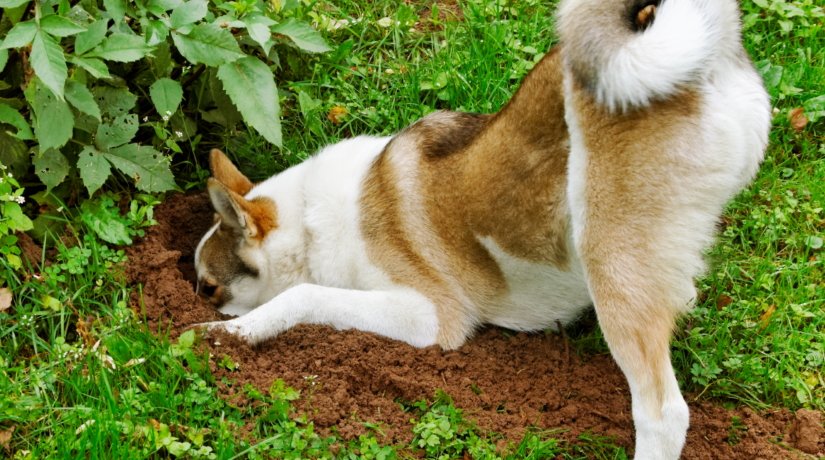Digging usually begins at around 4-5 months of age and this is usually the time that we start leaving our pups outside for a few minutes. All puppies are curious, so this will prompt your dog to dig, bark and to try and possibly escape from his backyard. Your dog most enjoys companionship, so if left to his own devices, he may try to escape by digging up your garden and going underneath your fence!
All dogs are also social and enjoy being their human pet parents. If left alone for long periods of time, they may try to entertain themselves by digging or escaping. Never punish your dog if he tries to dig while supervised. Instead keep him on a leash, and take him to his newly allocated digging spot. Don’t correct after the digging. Prevent digging in unwanted areas by showing him where he can dig! Reward and praise frequently! Anticipate his need for exploration, mental stimulation and companionship. Develop realistic expectations for your dog at each developmental stage of his life. If your dog is a digger, make sure that he does not swallow small bits of plastic, fertilizer or pesticide. These all have the potential to kill him.
If your rambunctious dog has developed a digging problem, don’t worry! Your furry best friend may just need a little more exercise and mental stimulation.
Although digging comes naturally to all dogs, you will still have to curb your dog’s desire to do so for his own safety.
If you’re not able to play with Fido and supervise him at the same time while outdoors, it’s best to create his own digging area in your backyard, where he’ll be able to dig freely at all times.
Solution
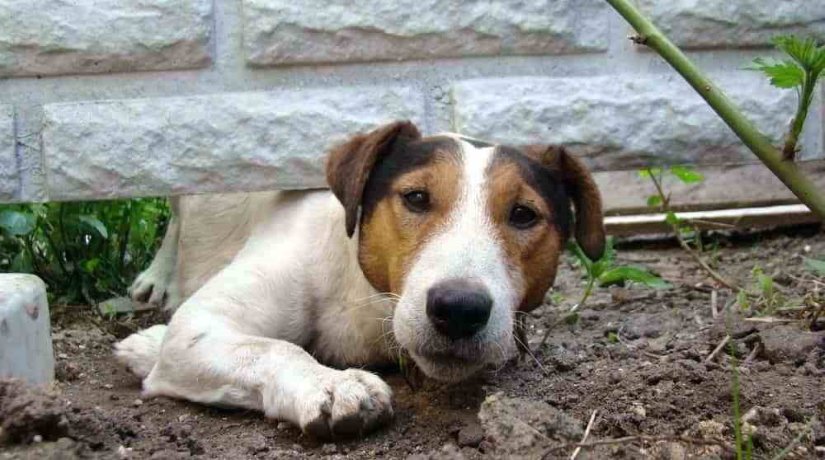
Your furry best friend’s predisposition to playful destructiveness tends to happen when he’s bored, and not exercised enough. Digging usually begins at around 4-5 months of age. That said, this is usually the time that we start leaving our dogs outside for a few minutes or longer.
All puppies are extremely curious and playful, so this will prompt your puppy or adult dog to dig, and to try and escape from your backyard. Your dog most enjoys companionship, so if left to his own devices, he may try to escape.
Dogs are also social, and enjoy being around their pet parents. If left alone for long periods of time, they may try to entertain themselves by digging beneath your fencing and escaping.
Training Tips
- Never punish your dog if he tries to escape.
- Anticipate your dog’s need for exploration and mental stimulation.
- Develop realistic expectations for your pooch at each developmental stage of his life.
- If your dog is a digger breed, make sure that he does not swallow small bits of plastic, fertilizer or pesticide. These all have the potential to kill.
- Keep your dog away from your newly planted freesias or rose garden. Place him in an area that is his to dig in. He must be able to do so freely.
- Bury bones in his digging area. Create an environment that will intrigue your puppy, so that he’ll be drawn to his own special digging area.
- Remove your dog immediately from the banned digging area, and place him in his own area. Reward him with a treat.
- Consider spaying or neutering your dog since this also will help curb his desire to meander away from home.
- Increase his exercise routine, since excessive digging can be the result of him having too much energy.
- Place a children’s wading pool in your yard, filled with fresh water. This tends to reduce a need for digging on hot days.
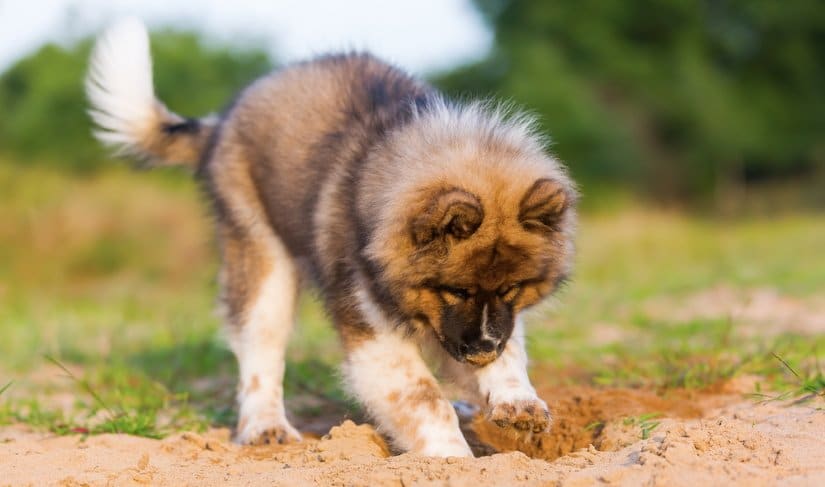
Despite your puppy being a cute bundle of fluff, you’ll need to correct him immediately. Your dog relies on you for safety and guidance.
Be firm, patient and kind at the same time. Your dog will love you all the more for being his pet parent and providing a safe environment.
Increasing Exercise Schedules for Your Dog to Prevent Digging
Although you’re going to have to set limits for your pooch, you’re also going to need to help your furry best friend become independent and confident in himself.
The best way to deal with unwanted behaviors such as digging is to develop interesting exercise routines like hiking, long walks in new areas, participating in new canine activities such as agility, obedience training, swimming and canine surfing.
Not only will your dog make new friends, but you will too. Praise your furry best friend frequently. If Fido keeps on with his excessive digging, consult with your veterinarian and a canine behaviorist.
Teaching Digging in Wanted Places on Command
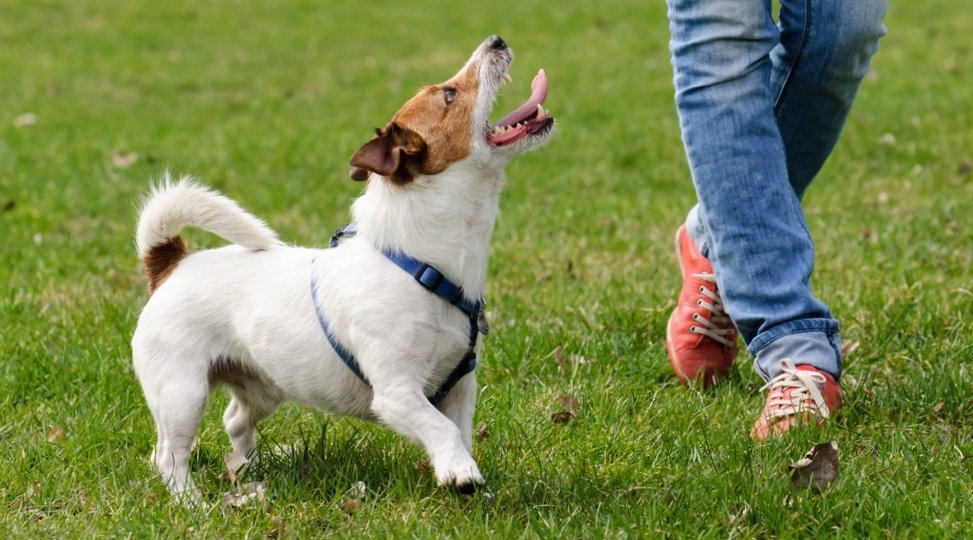
Capturing the Dig
This is so easily done, and is plenty of fun at the same time. You can now capture or shape your dog’s behavior, and teach him how to dig in his own spot by using the clicker method.
Simply use the clicker and reward when he starts digging in the appropriate area. Your dog will most likely look up at you in surprise, but as soon as he returns to his digging, you can reinforce this behavior by clicking and rewarding again.
To lure him to his allocated digging area, try burying an old bone. Add a verbal cue like “Go Dig”. Once your dog identifies with his verbal cue, he’ll stop digging until you give him the cue again.
Shaping The Dig
This takes slightly longer, but still is easy to do. Break down the “dig” into parts so that you can achieve each behavior.
- Show your dog where to dig and reward him with the clicker and treat
- Show Fido where to sniff the soil by burying his bone beneath the area
- Encourage digging in the area allocated for this
- Increase the length of time that your dog must dig for, click and reward with his favorite treat.
Solve your dog’s DIGGING PROBLEMS!
Since most dogs do enjoy their digging, it won’t take you long to encourage him to dig. Whenever he digs in his allocated spot, click and reward with his favorite treat.
Keep in mind that training works best when you have Fido’s full attention. That said, extend each training period by a few minutes. This helps to ensure that your dog does not lose focus, and enjoys his training session to the full.
Create a Special Digging Area Just for Him
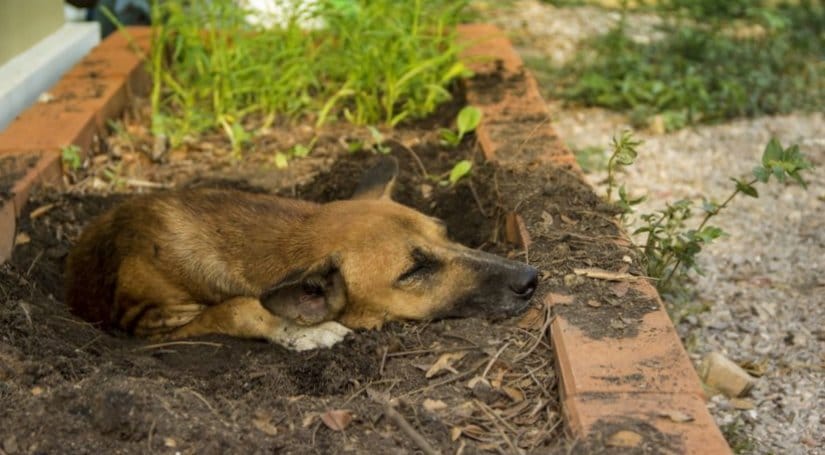
Bury bones in his digging area. You can encourage digging in this area by burying bones and dog toys in the sand. Reward him when he digs this up. Create an environment that will intrigue your dog, so that he’ll be drawn to his own special digging area. Remove your dog immediately from the banned digging area, and place him in his own area.
Reward him with a high-reward treat like LiveFree or Stewart freeze- dried training treats. Consider spaying or neutering your dog, since this helps curb his desire to leave home. Increase his exercise routine, since excessive digging can be due to lack of exercise.
Go out and purchase a children’s wading pool for your dog and fill it with fresh water. This tends to reduce a need to digging on hot days, since there is now a cool place to lie down in. In addition to the tips above, consider your pet’s personality, breed and age to determine if he’ll be content with the allocated digging spot. Try out the dog beach for extra digging opportunities for your pooch.
